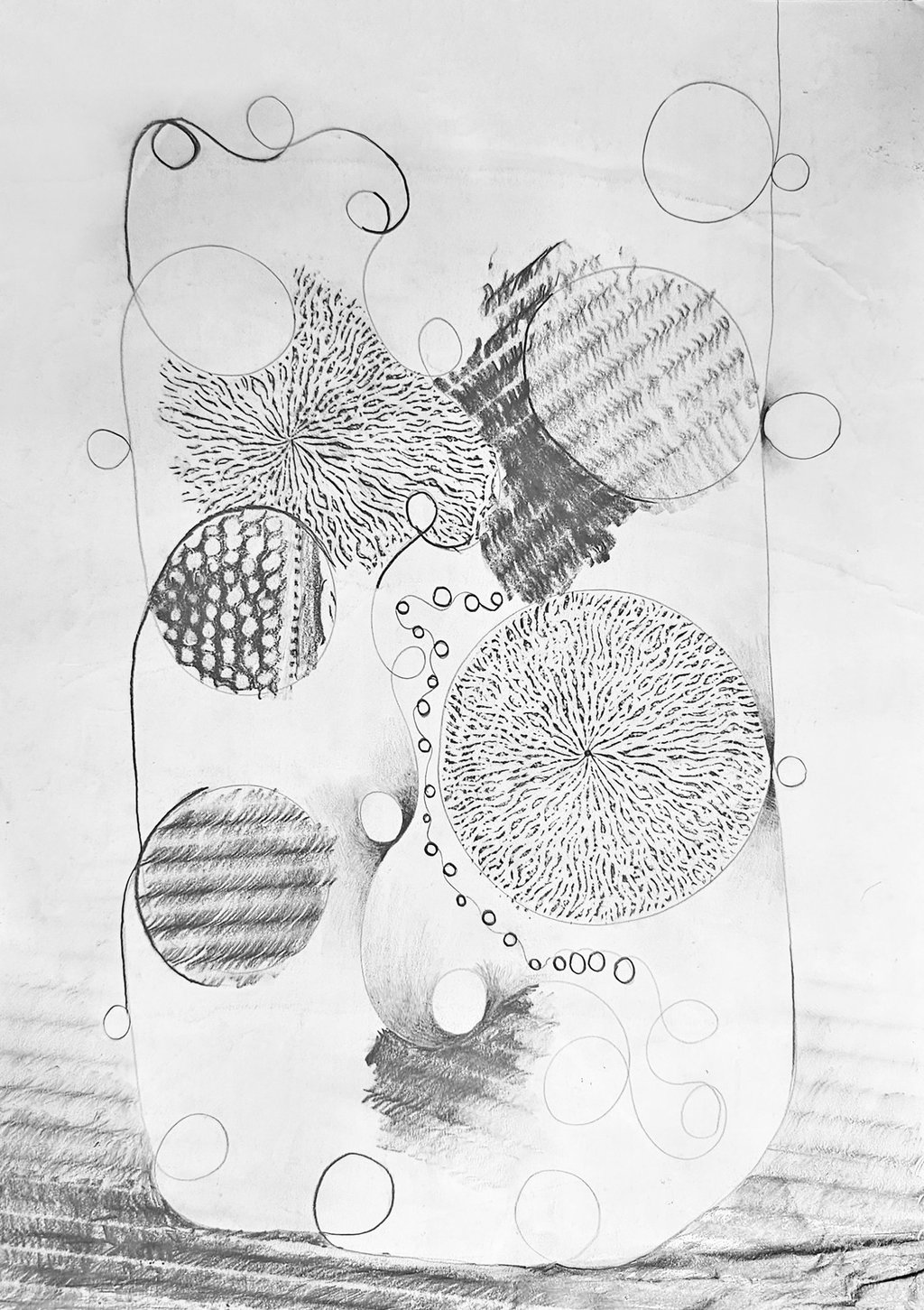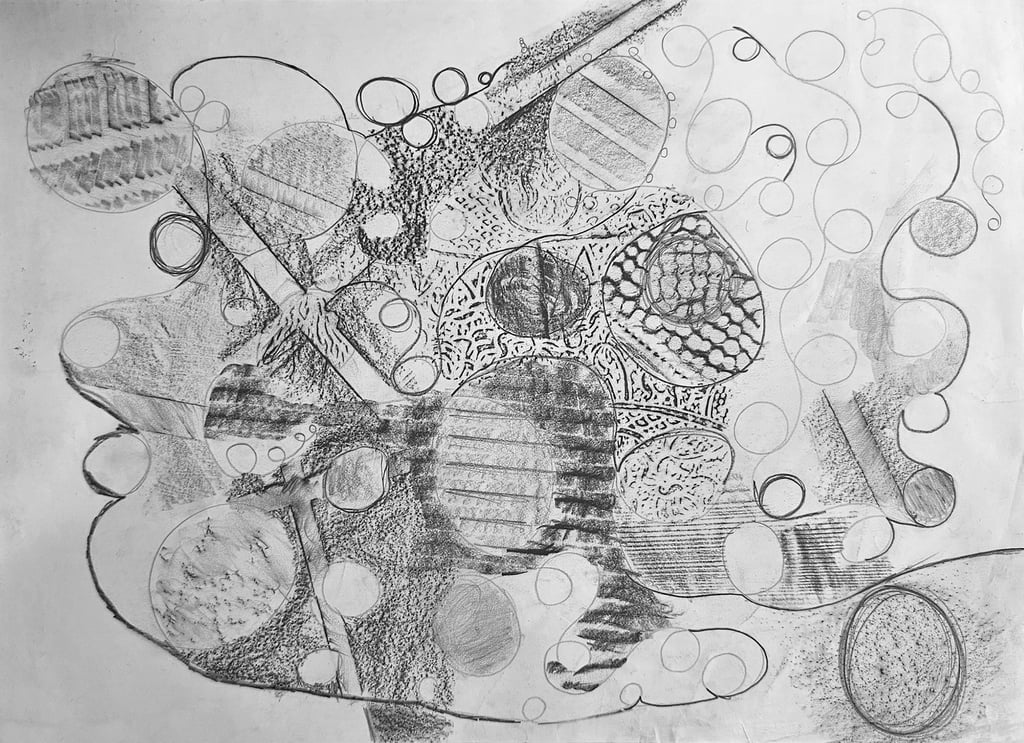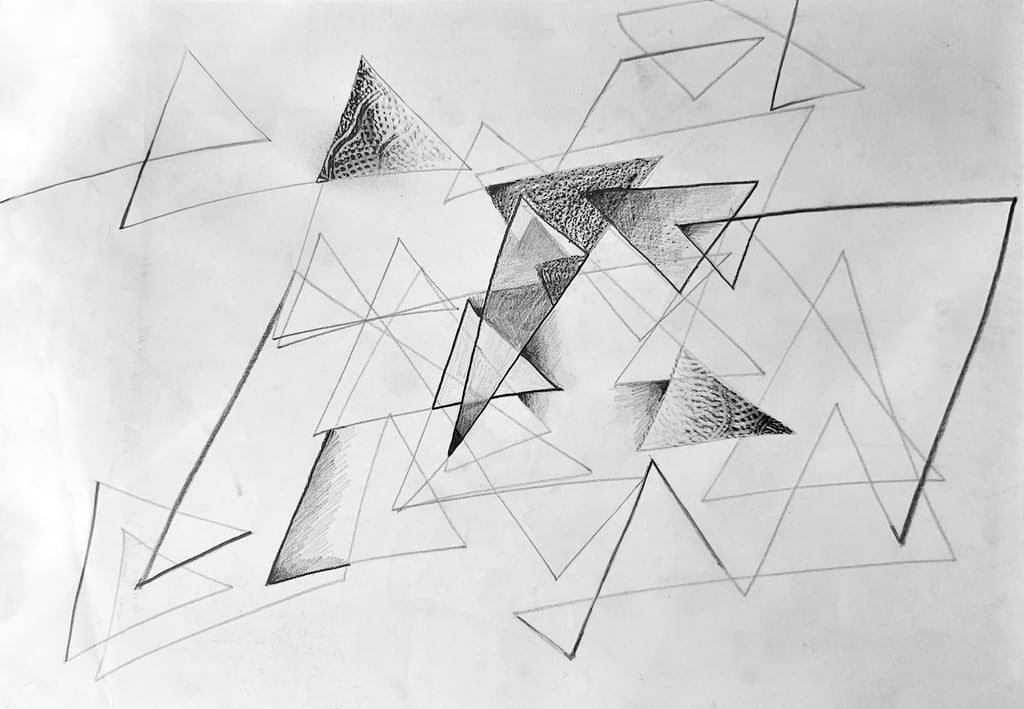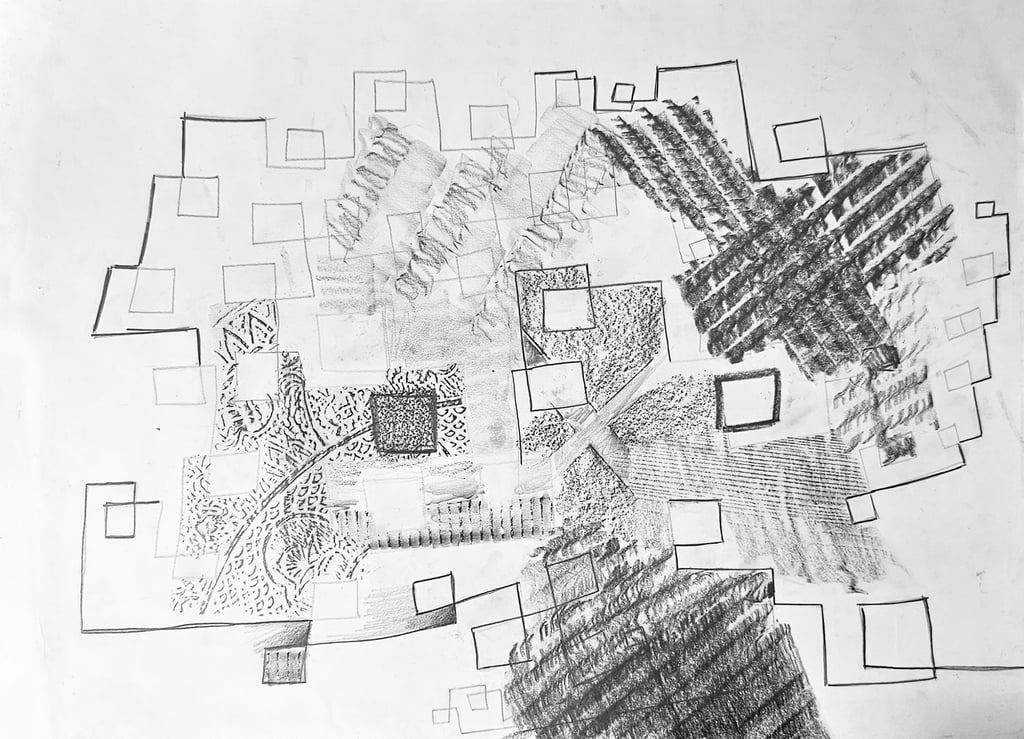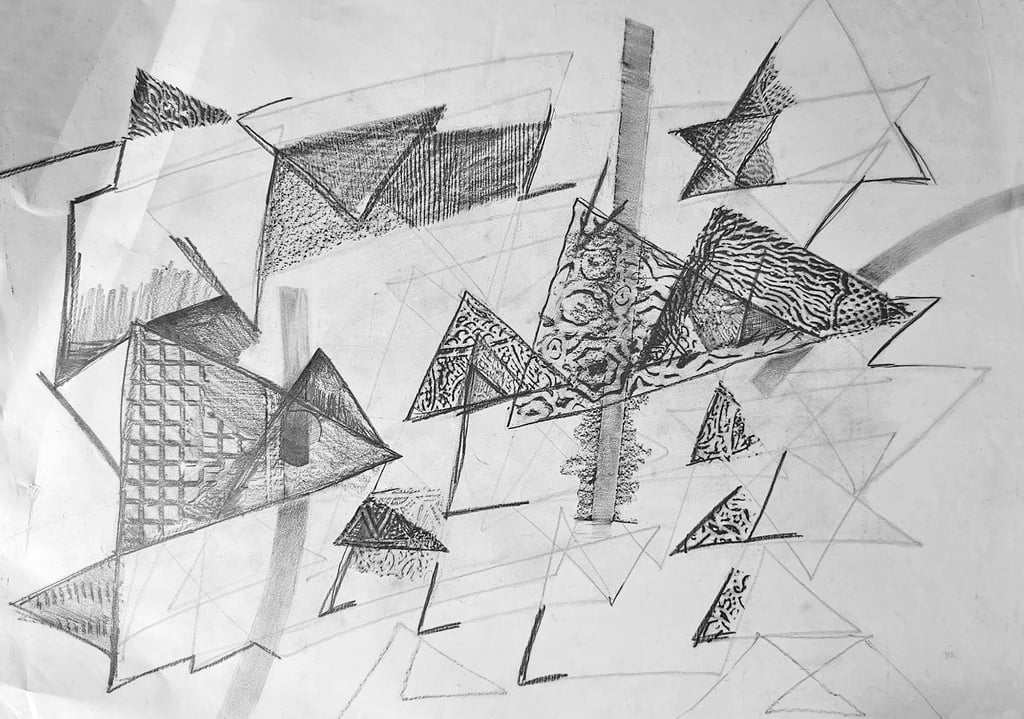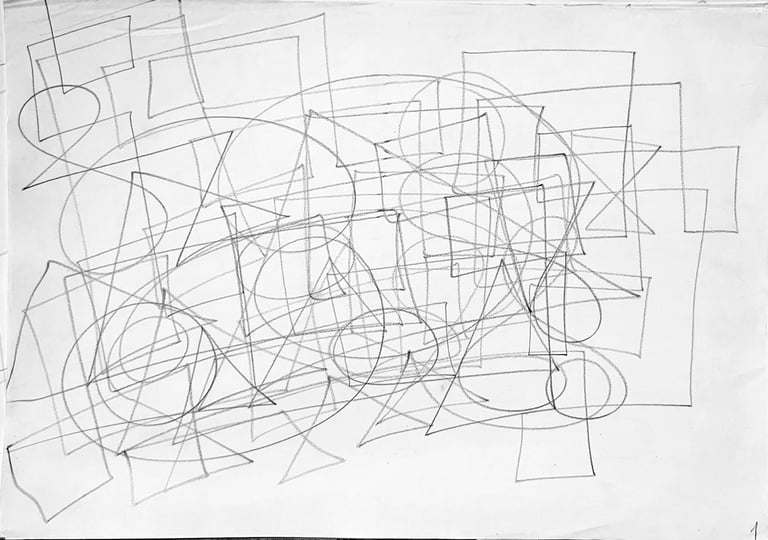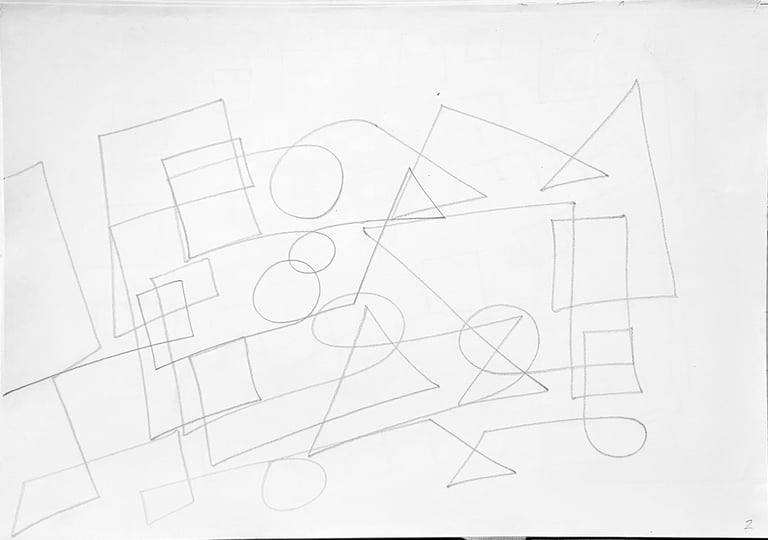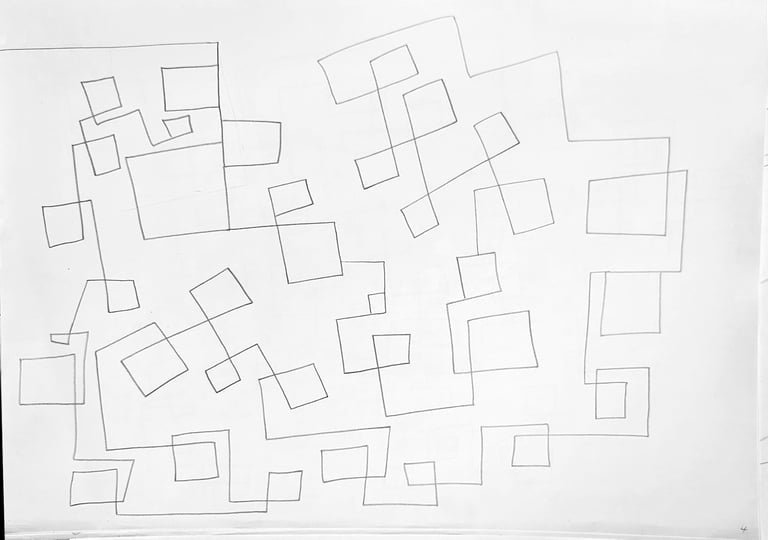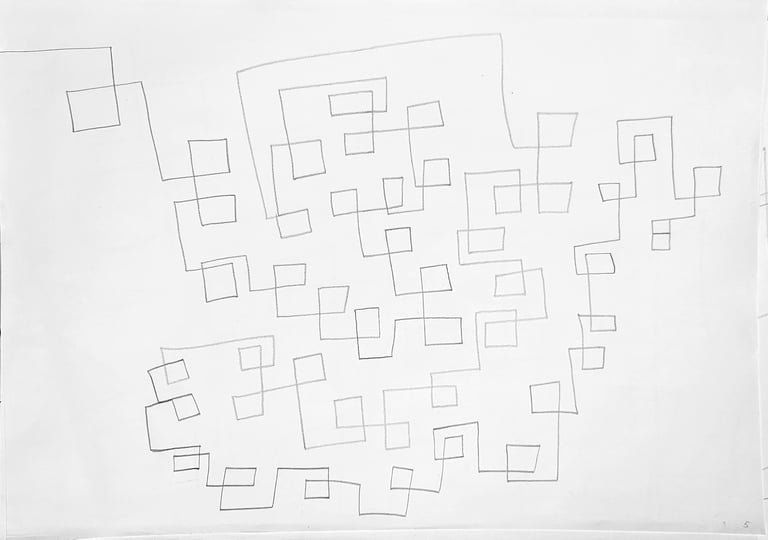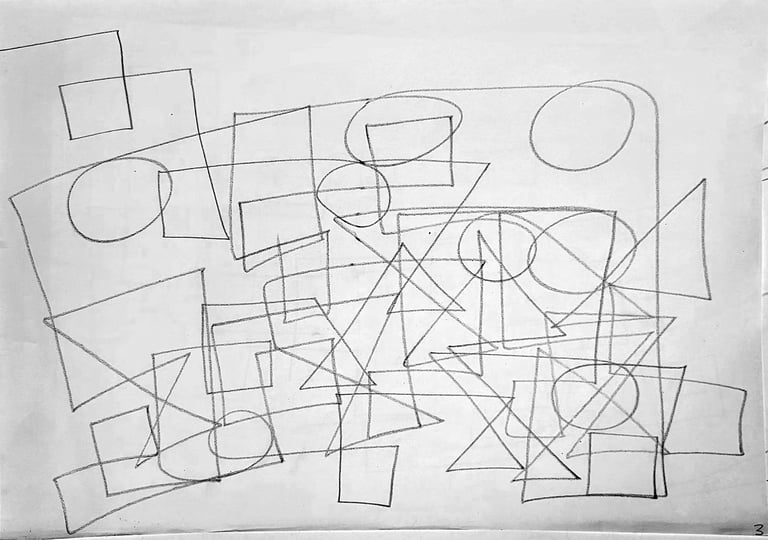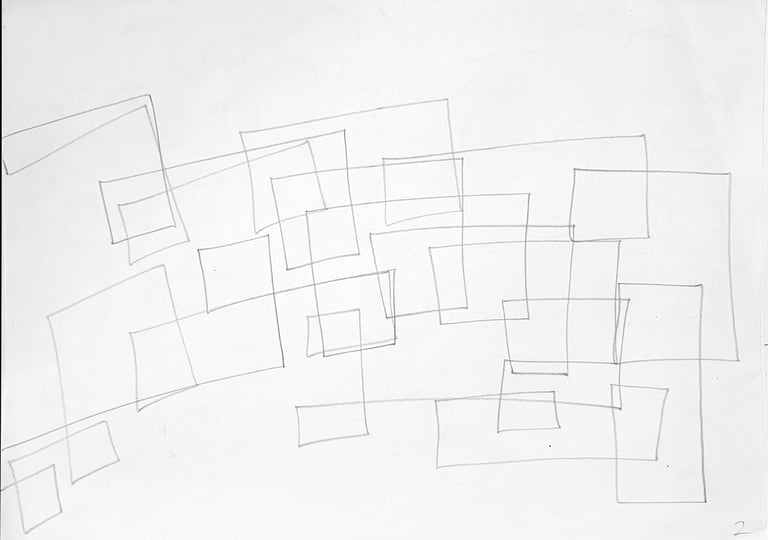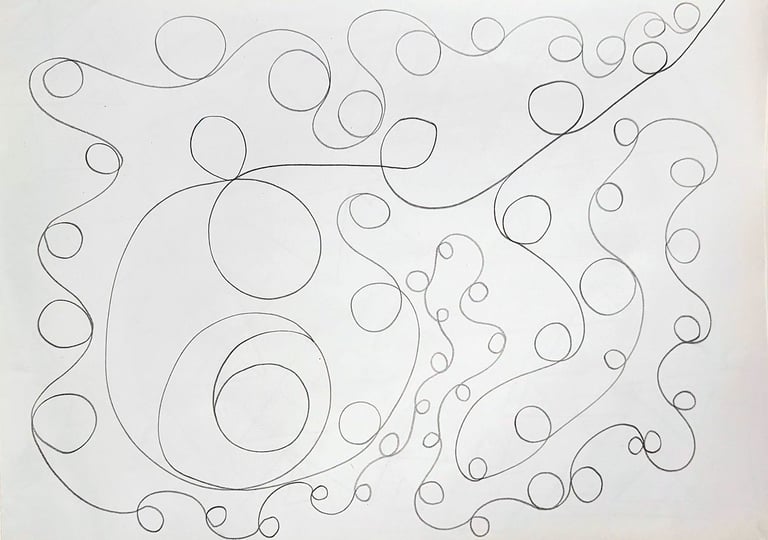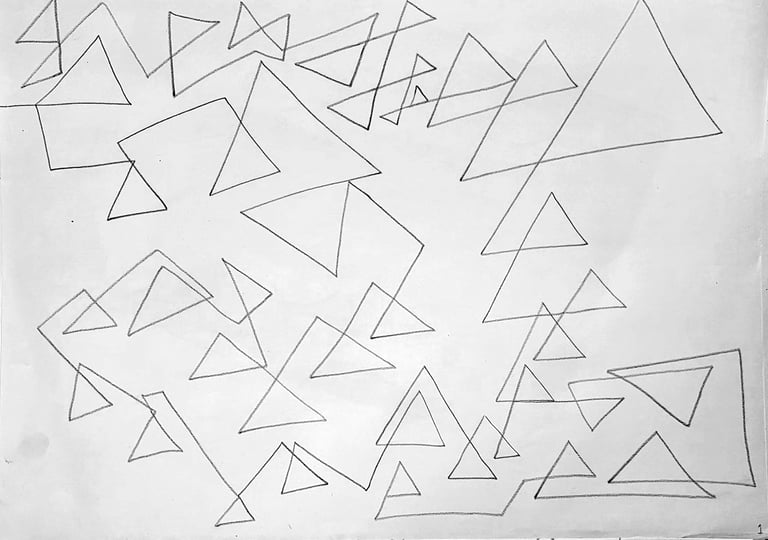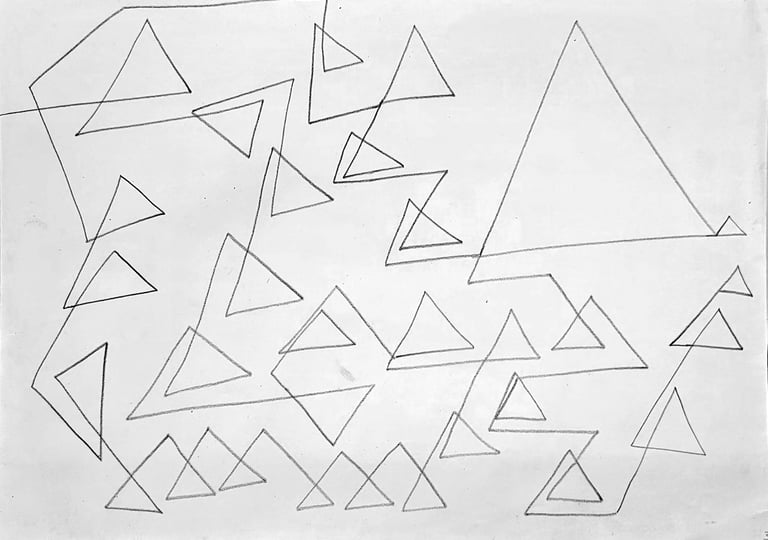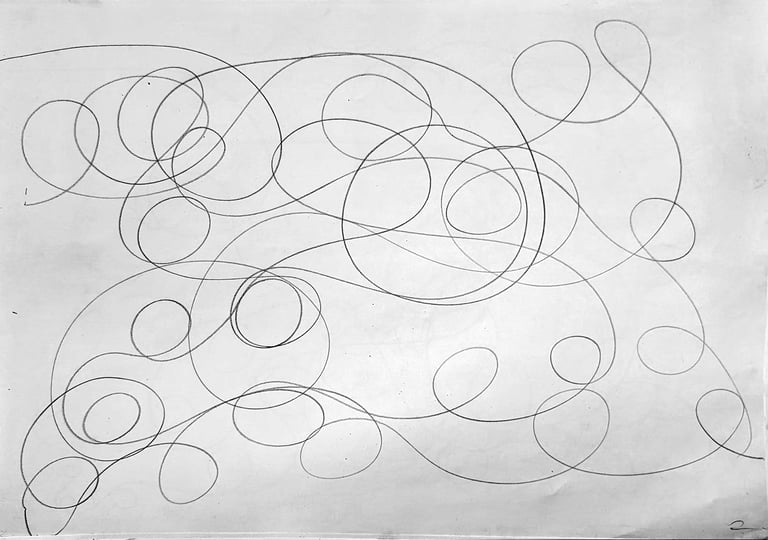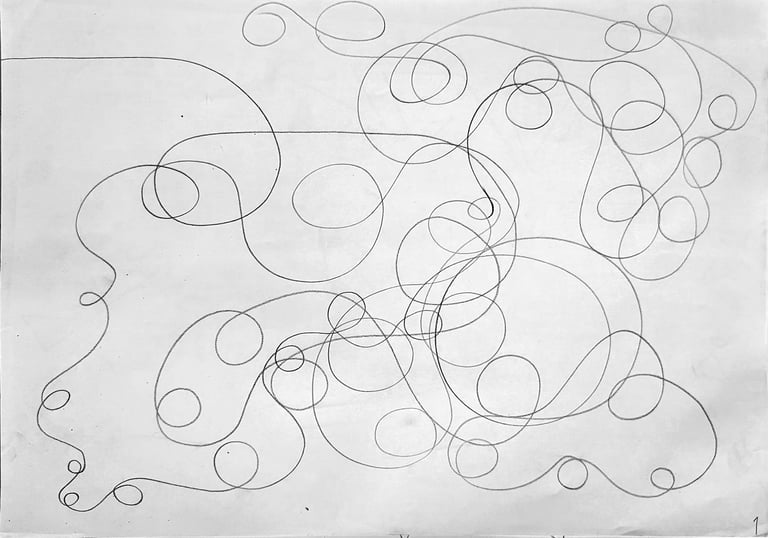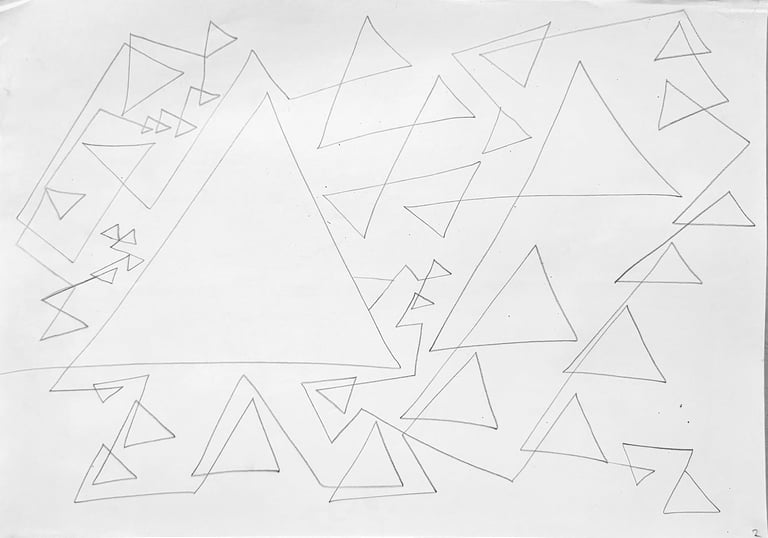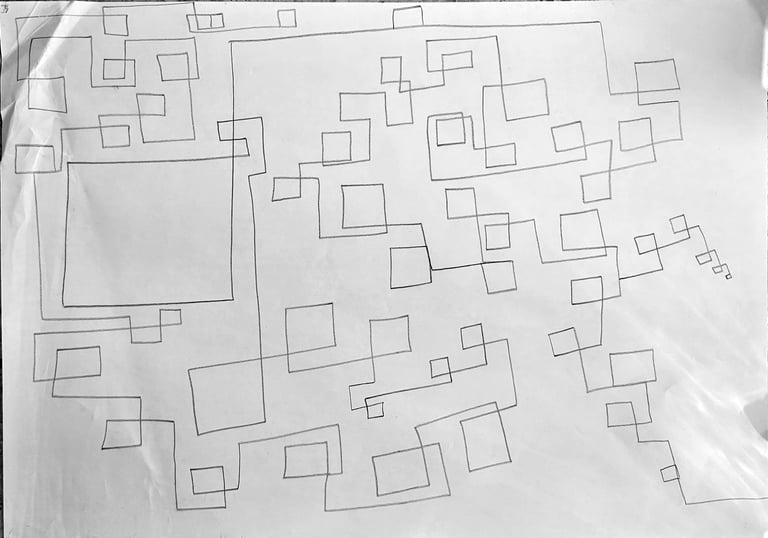African Frottage
Pencil and graphite on paper
The story of frottage in modern art begins with Max Ernst in 1925, when he discovered that rubbing pencil over paper laid atop textured surfaces released images from the material world into the imagination. For Ernst, these accidental forms were triggers for the subconscious.
In this series, the method is adopted but also made to new use. Here, the architecture comes first: sweeping, curved lines are drawn with intention, as spatial frameworks. Only then are the textures pressed into them, drawn from collections of African objects and materials such as the hammered dimples of a Moroccan copper table or the ridged skin of corrugated sheet metal. In a nod to Ernst, the worn grain of carved wood is also used.
The materials are unmistakably architectural, turning the entire process into a way of conceiving tactile and peculiar ethnic architectural materiality set against the precision of geometry. This has come up again and again in the work of the studio. The result is a layering of material cultures onto imagined but strongly geometric architectures. Shapes echo vernacular forms like a cluster of huts or a village seen from above. It is an architectural frottage: not dreamscapes as in Ernst’s Surrealism, but tactile materials embedded in space, where the unconscious mark serves the deliberate structure.
2009
1
1. Textured African town, pencil and graphite on paper, 59 × 84 cm
2. Ghadames Streetscape, pencil and graphite on paper, 80 x 55 cm
2
3
4
5
6
3. Metropolis Kinshasa, pencil and graphite on paper, 80 × 50 cm
4. Metropolis Tripoli, pencil and graphite on paper,
80 x 55 cm
5. Table Marocaine, pencil and graphite on paper,
80 × 50 cm
6. Preparatory Pieces, pencil on paper, various sizes.

